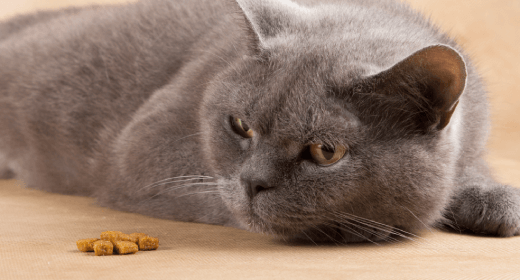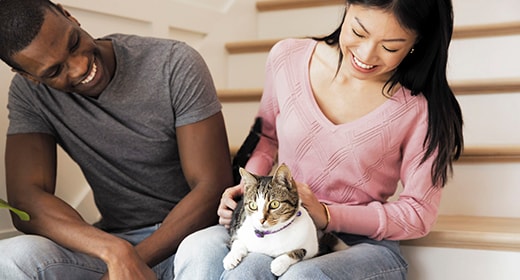

Cats are known to be finicky and picky about a lot of things. Their pickiness in terms of toys and activities is fine and completely natural; if it extends to their eating, things could get a little concerning. If your cat is a picky eater, you can try a few remedies such as serving them different food items. If they still turn away from the food served, you should consult a vet. However, before drawing any conclusions, it is necessary to understand that it is in a cat’s nature to be fussy. And while your feline friend may be stubborn initially, they tend to adapt to a set routine eventually. So, here is a brief guide to help you better understand your cat’s pickiness about food.
There are certain reasons why your cat turns from the food served. This behaviour may not necessarily indicate that your cat is a finicky eater.
If your cat is refusing to eat food served to them, it is possible that they are not hungry. Some possible reasons for this could be that they have been munching throughout the day and have had a lot of treats. If your cat does roam around outdoors by themselves, it is entirely possible that they switched to their hunting instincts and caught prey.
If you notice your cat has not eaten in more than 24 hours, it might be a sign of an underlying weakness and it is best to consult a vet in this matter.
Improper routine
Despite being finicky, cats are creatures who thrive on routine. So, when it comes to their daily feeding, it is best to establish a routine and stick to it. If your cat is not served meals at regular times, they may refuse to eat.
If you have not cleaned your cat’s serving plate before pouring in their food, they may not enjoy the meal. Cats may refuse to eat out of a soiled bowl or plate, so ensure that your pet’s serving dish is always clean.
A lot of cats tend to enjoy eating alone. They do not like consuming meals in the presence of others or being the centre of attention during meal times.
If your cat starts eating less, you may want to look for a factor that could be causing stress. Has another animal been added to the household? Has a family member left or died? Have the cat's surroundings changed, such as a move to a new house? When the stress is removed, your cat will probably go back to a normal diet. If your cat seems healthy, happy, and lively, and has a good coat and clear eyes, there is little cause for concern. Cats also have an uncanny ability to smell changes in the world around them. Even a new bowl can disturb a cat's eating habits. Some cats refuse to eat from plastic or hard rubber bowls.
Medical factors also could contribute to a change in your cat’s eating habits. The only way to verify this is to visit a veterinarian. If the medical examination does not verify that a problem exists, your cat may be manipulating you in grand style!
If your cat is a picky eater and it’s tough to get them to finish a meal, here are some tips you could try:
Heat wet food before serving
Cats have a strong sense of smell and enjoy food by its aroma. If the wet food you served them has gone cold, it may not give off the aroma that cats love. So, heating the meal a little may help.
Clean the serving dish/bowl
Since cats have a strong sense of smell, they will know if their serving bowl is unclean. If so, it can quickly kill their appetite and they may turn away from the food. So, ensure that you always serve meals to your cat in a clean dish/bowl.
Add chicken broth/tuna water/cat oil to their food
Try to entice your cat to eat food by adding a little amount of warm chicken broth, tuna water, or cat oil to the meal. This will significantly improve the smell of the food for the cats. However, do be sure to never serve anything containing onions, chives, or garlic, as these ingredients can be harmful to a cat.
Try different foods
If your cat is still refusing to eat, it may be time to change the food. You may have to try a different product and hope your pet likes the new one.
If despite trying everything your cat still won’t eat, it is time to consult your vet. Also, if your cat has gone more than 24 hours without eating anything, you should visit the vet immediately as your pet could be ill.
If your cat is set on a routine that needs to be changed, make the change slowly and gradually. Your cat may not like a sudden switch in things and can continue to refuse to eat. If you wish to switch your fur baby over to different food, start off by mixing a little quantity of the new food with their current food, over the span of a few days. Gradually, increase the quantity of the new food item until it is the only thing being served.
Switching to a new cat food can be tough. IAMS™ recognises that caring cat owners want to have the option of feeding their pet a more varied diet. IAMS cat foods offer a number of nutritional choices for your cat, including dry and canned foods, naturally preserved diets, and options for overweight cats or cats with reduced activity levels. All IAMS™ cat foods are complete and balanced for specific lifestyles and life stages. Consult your veterinarian or a Pet Professional at The IAMS Company to discuss the best selection for your cat.
Here are some more things you need to keep in mind as a cat parent.
Make sure that your cat has a quiet, comfortable place to eat.
And remember, your cat needs to visit the veterinarian regularly. Regular visits help keep your cat happy and healthy!


Since most feline creatures do not like water, bathing a kitten can seem to be a daunting task. Yet, as a cat parent, you cannot give up. You must bathe your kitty, especially to desensitise them to the experience and prevent skin problems. However, most first-time cat parents do not know how to get started with bathing their kittens. If you are one of them, fret not! With patience and a gentle approach, you can turn bathing time into a positive experience for your feline friend. So, read on! This article takes a deep dive into how to bathe a kitten.
Before you go on to bathing your kitten, do not forget to trim its nails. Feline creatures do not hesitate from clawing anyone or anything that triggers discomfort in them. Not even their own caregivers. Similarly, there are multiple other things you must ensure while bathing your kitten. Let's explore them in brief:
Brush your kitten's fur
Kittens shed all year long. Like humans, they might shed in excess while bathing, and that might clog your draining system. Hence, it's best to brush your kitty's fur thoroughly to get rid of the loose fur before you place it in the bathtub.
Pick the right time
Your kitten is going to oppose the bathing time with full force when it is highly energetic. However, when it is tired and exhausted, your pet might just let you do your thing. So, bathe your newborn kitty after tiresome activities like playtime, exercise, etc.
Use a kitten-specific shampoo
When bathing your kitty, go for a bottle of shampoo that is specifically developed for cats. And avoid shampoos used by humans at all costs. As cats groom themselves, chances are that they may ingest some shampoo residue left on their fur.
Rinse thoroughly
Use a cup or small container to rinse off the shampoo from your kitten’s fur, ensuring that water doesn’t get into its ears, nose, or eyes. Since you want your kitty to feel comfortable during the bathing session, avoid using extremely hot or cold water. Instead, go for a few degrees above lukewarm. Moreover, run your fingers through its coat to evenly distribute the water.
Shower your kitten with treats
When you are done bathing your kitten, reward it with treats immediately. Playtime and treats can help your feline friend resonate bathing time with fun moments. Treats can also come in handy to distract your pet if it starts to get anxious.
Every time you bathe your kitty, you must dry it thoroughly. In fact, it is one of the most important aspects of learning how to wash a kitten as damp fur can lead to skin problems. However, you do not want to vigorously rub a towel on your pet’s fur. It will only cause discomfort and irritation. Since bathing is a stressful experience for most kitties, you need to be extra careful while drying their fur up. So, here’s a step-by-step guide on drying your kitten’s coat:
Step 1: Place your kitten on a clean and dry towel.
Step 2: Wrap your kitty in the aforesaid towel.
Step 3: Sit on a chair with your pet on your lap and allow it to calm down.
Step 4: Press the towel gently against your kitten’s fur to get rid of excess water.
Step 5: Continue to press dry your kitty’s fur until its damp and not soaking wet.
Cats and kittens have an aversion to water due to their ancestral history. These feline creatures were once desert-dwelling animals, which means they rarely encountered rains, lakes, or rivers. Hence, all types of water – except drinking water – is alien to them. And that’s probably why your fur baby tries to resist the bathing session. However, being gentle with your little kitty can prevent issues and make the whole experience a little comfortable for it. Moreover, do not submerge your furry friend under running water and keep its bath time as short as possible.
Note: If your kitten continues to show extreme distress during bath time, consult a veterinarian.
Now that you know how to bathe a kitten, go on and help your pet groom. The time spent bathing your kitty provides you two with an opportunity to establish an unbreakable bond. Moreover, it will familiarise your kitten with your touch, fostering trust and strong cat-owner relationship.